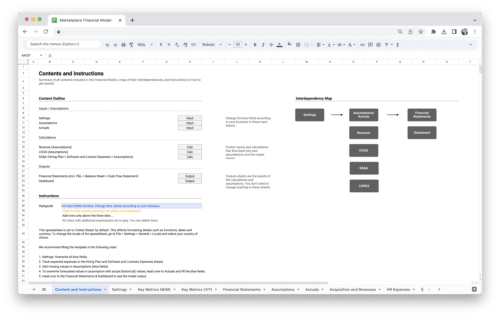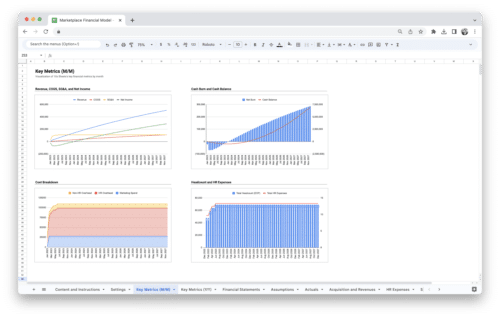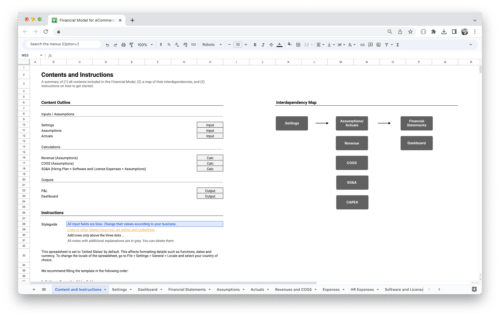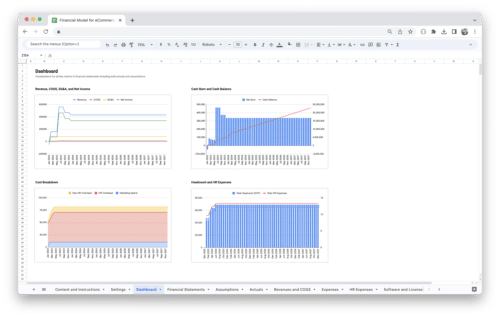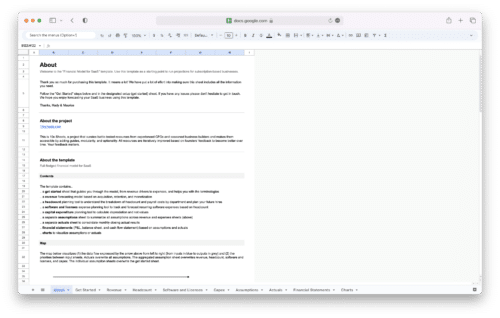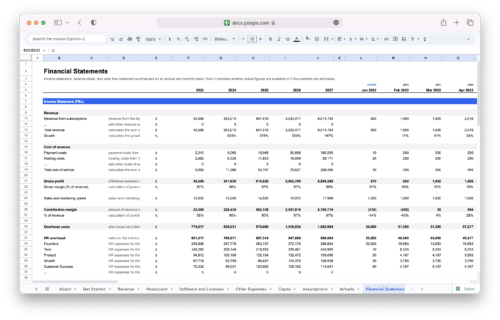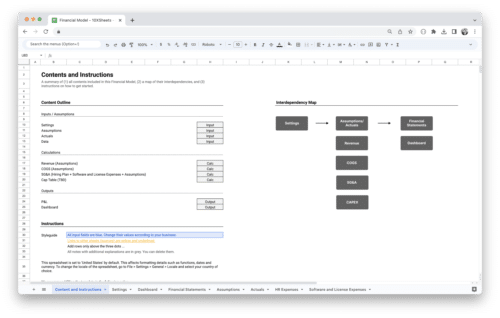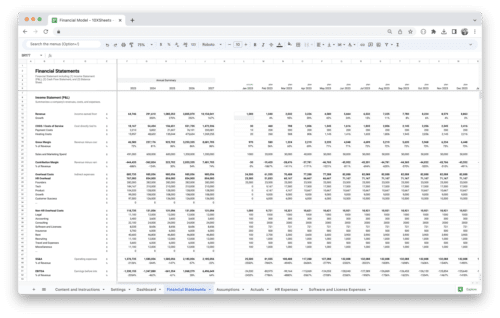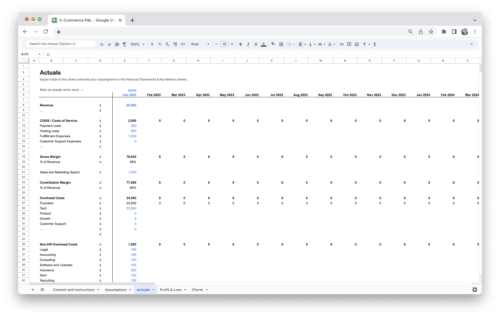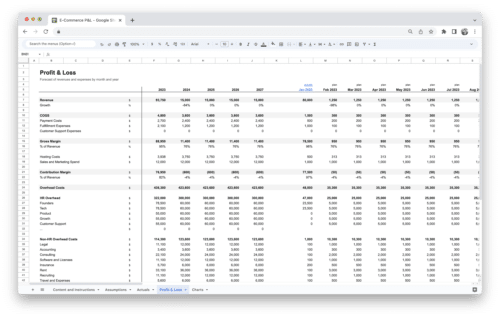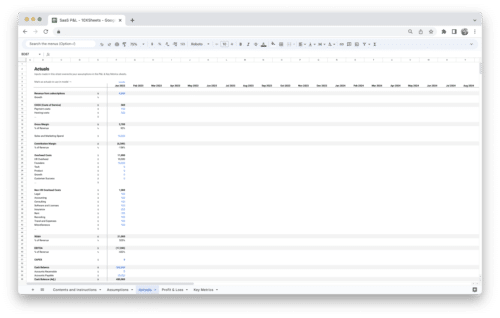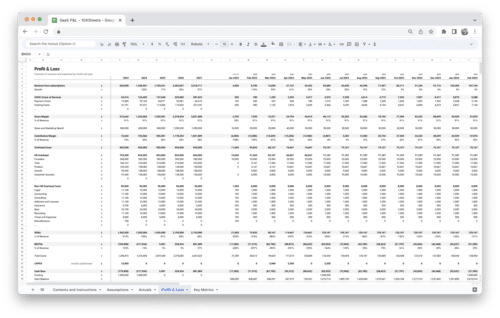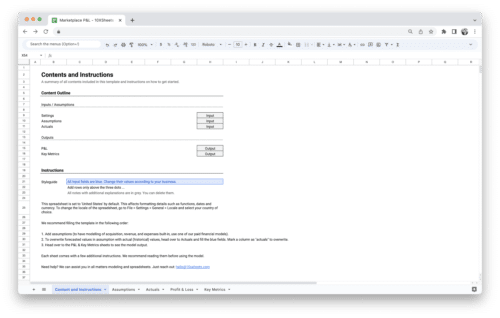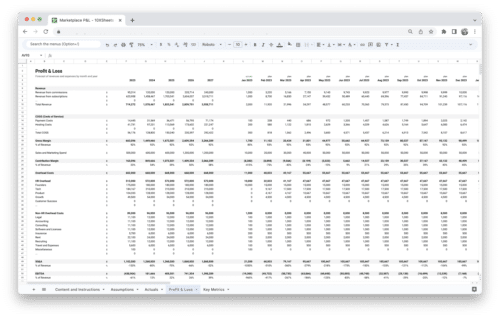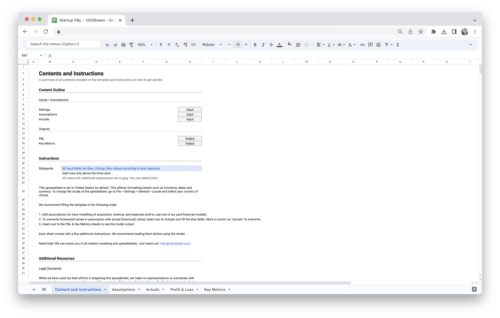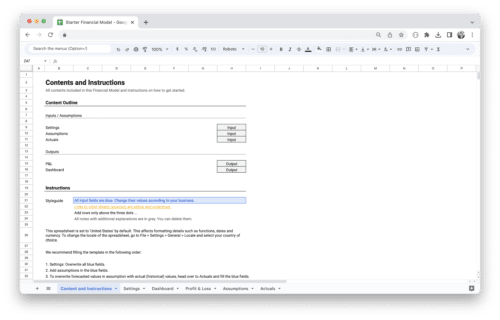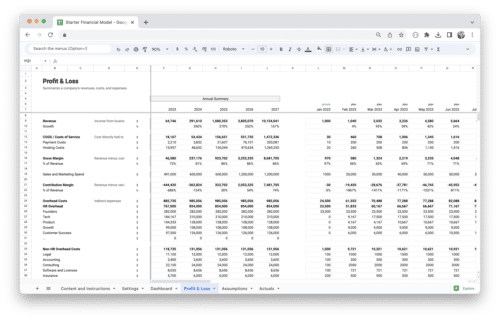Are you ready to unlock the boundless potential of AI in the world of finance? Dive into the guide on AI Financial Modeling, where we demystify the intricate realm of artificial intelligence and its profound impact on financial analysis, trading strategies, risk management, and much more.
Join us on a journey through the intricacies of data-driven insights, algorithmic trading, predictive analytics, and the countless possibilities that AI brings to the financial industry. Whether you’re a seasoned financial professional or an aspiring data enthusiast, this guide will equip you with the knowledge and tools to harness the transformative power of AI in the financial world.
What is AI Financial Modeling?
AI financial modeling is a dynamic and transformative approach to analyzing and predicting financial markets and economic trends. It harnesses the power of artificial intelligence and machine learning techniques to process vast volumes of data, identify patterns, and make data-driven decisions in the realm of finance.
The Essence of AI Financial Modeling
At its core, AI financial modeling leverages sophisticated algorithms and statistical models to extract meaningful insights from financial data. Here are some key aspects:
- Data-Driven Insights: AI models can uncover hidden patterns, correlations, and trends within financial data that may be challenging for human analysts to discern.
- Predictive Capabilities: AI financial models are capable of forecasting future market movements, asset prices, and economic indicators, aiding in investment decisions and risk management.
- Risk Assessment: AI can assess and manage risks effectively by analyzing historical data and market conditions to identify potential vulnerabilities in investment portfolios or trading strategies.
- Automation: By automating repetitive tasks such as data preprocessing, trading execution, and portfolio rebalancing, AI financial models streamline processes and reduce human error.
- Real-time Decision Making: High-frequency trading and real-time data analysis are made possible through AI, enabling traders to capitalize on market opportunities swiftly.
Benefits of Using AI in Financial Modeling
The integration of AI into financial modeling offers a wide array of advantages that enhance decision-making, risk management, and overall performance within the financial industry. Let’s explore these benefits:
- Enhanced Accuracy: AI models can process and analyze vast datasets with precision, reducing errors associated with manual analysis and decision-making.
- Speed and Efficiency: AI-driven algorithms operate at unparalleled speeds, enabling real-time analysis and rapid execution of trading strategies.
- Risk Mitigation: AI models excel at risk assessment and can provide early warnings for potential market downturns or portfolio vulnerabilities.
- Portfolio Optimization: AI financial models can optimize asset allocation within portfolios to maximize returns while managing risk according to specific objectives.
- Adaptability: These models continuously adapt to changing market conditions, ensuring that strategies remain effective in dynamic financial landscapes.
- Data Utilization: AI effectively leverages alternative data sources, such as social media sentiment or satellite imagery, to gain unique insights into financial markets.
- Cost Reduction: Automation of tasks reduces operational costs, making financial modeling more cost-efficient.
- Competitive Advantage: Firms that embrace AI financial modeling gain a competitive edge by harnessing cutting-edge technology for decision-making and strategy development.
As AI financial modeling continues to evolve, its potential to transform the financial industry and drive innovation remains substantial. Understanding the core principles and benefits of AI in this context is crucial for organizations and professionals seeking to leverage its capabilities for financial success.
Building the Foundation of the AI Financial Model
Now that we’ve covered the prerequisites and data considerations, it’s time to establish a strong foundation for AI financial modeling. We will delve into the critical aspects of setting up your workspace, understanding machine learning concepts, mastering feature engineering, and making informed model selection and architectural decisions.
Setting Up Your Workspace
Before you embark on your AI financial modeling journey, it’s essential to create a conducive workspace for development and experimentation. Here’s how to get started:
Software Installation
Ensure that you have the necessary software tools and libraries installed on your system:
- Python: Install Python, a versatile programming language for AI and data science.
- Libraries: Download and set up Python libraries such as NumPy, pandas, and scikit-learn for data manipulation and machine learning.
- Integrated Development Environment (IDE): Choose an IDE that suits your preferences, such as Jupyter Notebook, Visual Studio Code, or Spyder, for coding and experimentation.
Version Control
Implement version control using Git to track changes in your code and collaborate effectively with team members if applicable. Platforms like GitHub or GitLab provide excellent hosting services for your repositories.
Understanding Machine Learning Concepts
Before diving into AI financial modeling, it’s crucial to have a solid grasp of fundamental machine learning concepts. Here are key concepts to master:
Supervised Learning
Supervised learning involves training a model on labeled data, where the model learns to make predictions or classifications. Common algorithms include:
- Linear Regression: Used for predicting continuous numerical values.
- Logistic Regression: Suitable for binary classification tasks.
- Support Vector Machines (SVM): Effective for both classification and regression.
Unsupervised Learning
Unsupervised learning deals with unlabeled data, where the model identifies patterns and structures. Key techniques include:
- Clustering: Grouping similar data points together, as seen in k-means clustering and hierarchical clustering.
- Dimensionality Reduction: Reducing the number of features while retaining essential information using techniques like Principal Component Analysis (PCA).
Reinforcement Learning
Reinforcement learning is employed in dynamic decision-making scenarios, such as optimizing trading strategies. Concepts include:
- Markov Decision Processes (MDP): A framework for modeling decision processes.
- Q-Learning: An algorithm for learning optimal policies in a stochastic environment.
- Deep Reinforcement Learning: Combining deep neural networks with reinforcement learning for complex tasks.
Feature Engineering for Financial Data
Feature engineering plays a pivotal role in AI financial modeling by transforming raw data into meaningful features that enhance model performance.
Feature Selection
Choosing the right features is critical to prevent model complexity and overfitting. Methods include:
- Correlation Analysis: Identify features strongly correlated with the target variable.
- Recursive Feature Elimination (RFE): Select features by iteratively removing the least important ones.
Feature Transformation
Transforming features can uncover hidden patterns in financial data. Techniques include:
- Logarithmic Transformation: Useful for skewed data distributions.
- Polynomial Features: Creating polynomial features to capture nonlinear relationships.
Model Selection and Architecture
Selecting the appropriate AI model and designing its architecture are pivotal to successful AI financial modeling:
Model Evaluation
Before selecting a model, define performance metrics relevant to your financial task. Common metrics include:
- Mean Absolute Error (MAE): Measures the average absolute error between predictions and actual values.
- Mean Squared Error (MSE): Quantifies the squared differences between predictions and actual values.
- Accuracy: For classification tasks, the proportion of correct predictions.
Hyperparameter Tuning
Optimize your model’s hyperparameters to achieve better results. Techniques include grid search, random search, and Bayesian optimization.
Ensemble Methods
Consider using ensemble methods to improve model accuracy and robustness:
- Random Forest: Combines multiple decision trees for enhanced prediction accuracy.
- Gradient Boosting: Sequentially builds an ensemble of models to correct errors made by previous models.
Deep Learning Architectures
For complex financial tasks, delve into deep learning architectures:
- Feedforward Neural Networks: Suitable for various financial applications, including forecasting and classification.
- Recurrent Neural Networks (RNNs): Ideal for time series analysis and sequential data.
- Long Short-Term Memory (LSTM) Networks: Effective for capturing long-term dependencies in financial data.
With a strong foundation in place, you’re well-prepared to move forward in your AI financial modeling journey.
AI Financial Model Data Collection and Preparation
In the realm of AI financial modeling, the process of collecting and preparing data is often where the real work begins. We will dive deep into the intricacies of data collection, cleaning, transformation, and the crucial step of exploratory data analysis (EDA) for financial data.
Data Sources for Financial Modeling
To build accurate and robust AI-driven financial models, you need reliable and comprehensive data sources.
Financial Statements
Financial statements are the backbone of financial modeling. They provide essential data points for assessing a company’s financial health. Key financial statements include:
- Income Statement: Reveals a company’s revenues, expenses, and profitability over a specific period.
- Balance Sheet: Shows a company’s assets, liabilities, and equity at a given point in time.
- Cash Flow Statement: Highlights the flow of cash in and out of a company.
Market Data
Market data, especially historical stock market data, is invaluable for various financial modeling tasks. It includes:
- Stock Prices: Daily or intraday stock prices, adjusted for splits and dividends.
- Trading Volumes: The number of shares traded on a given day.
- Market Indices: Data on market indices like the S&P 500 or NASDAQ.
Economic Indicators
Macroeconomic factors can significantly influence financial markets and individual companies. Some essential economic indicators include:
- Interest Rates: Data on central bank interest rates and government bond yields.
- GDP Growth: Gross Domestic Product (GDP) growth rates for the relevant economy.
- Inflation Rates: Consumer Price Index (CPI) or Producer Price Index (PPI) data.
Alternative Data Sources
Innovative financial modeling often incorporates alternative data sources, such as:
- Social Media Sentiment: Analyzing sentiments expressed on platforms like Twitter.
- Satellite Imagery: Monitoring changes in infrastructure or logistics.
- Web Scraping: Extracting data from websites for specific financial insights.
Data Cleaning and Transformation
Once you’ve gathered your data, the next step is cleaning and transforming it to ensure it’s suitable for modeling. Here’s how to go about it:
Data Cleaning
Data cleaning involves identifying and rectifying issues within your dataset. Common tasks include:
- Outlier Detection: Identifying and handling extreme values that could skew your analysis.
- Duplicate Removal: Eliminating duplicate records to maintain data integrity.
- Error Correction: Addressing data entry errors and inconsistencies.
Feature Engineering
Feature engineering is the art of creating new features or transforming existing ones to enhance model performance. Consider these techniques:
- Creating Ratios: Calculate financial ratios such as debt-to-equity or price-to-earnings.
- Time-Based Features: Generate time-related features like moving averages or lag variables.
- Normalization: Standardize features to bring them to a similar scale.
Handling Missing Data
Missing data is a common challenge in financial modeling. Addressing it appropriately is crucial for accurate results. Strategies for handling missing data include:
Imputation Techniques
Impute missing values using various methods:
- Mean or Median Imputation: Replace missing values with the mean or median of the feature.
- Regression Imputation: Predict missing values using regression models.
- Interpolation: Estimate missing values based on the trend in the available data.
Data Interpolation
Interpolation is particularly useful for time series data:
- Linear Interpolation: Estimate missing data points based on linear trends between adjacent data points.
- Seasonal Interpolation: Consider seasonal patterns to fill gaps in time series.
Exploratory Data Analysis (EDA) for Financial Data
Exploratory Data Analysis (EDA) is a critical step in understanding your financial data’s characteristics and uncovering valuable insights. Here’s how to approach EDA:
Descriptive Statistics
Start by calculating descriptive statistics to gain initial insights:
- Mean, Median, and Mode: Measure central tendencies.
- Variance and Standard Deviation: Assess data variability.
- Skewness and Kurtosis: Examine data distribution shape.
Data Visualization
Visualizations help you better understand your data:
- Histograms: Display data distributions.
- Box Plots: Reveal outliers and quartile information.
- Time Series Plots: Show trends and seasonality in financial time series data.
Correlation Analysis
Explore relationships between variables:
- Correlation Matrix: Examine pairwise correlations.
- Scatterplots: Visualize relationships between two continuous variables.
Feature Importance
Identify which features are most influential for your modeling task:
- Feature Importance Scores: Calculate importance scores using methods like Random Forest feature importance.
By thoroughly preparing your data and conducting exploratory data analysis, you lay a solid foundation for building AI financial models that can provide meaningful insights and predictive power.
AI Financial Model Development
Now that we have a solid understanding of data preparation and exploratory data analysis, let’s delve into the heart of AI financial modeling: model development. We will explore a variety of techniques, including supervised learning, time series forecasting, unsupervised learning for portfolio analysis, and even the exciting realm of reinforcement learning for trading strategies.
Supervised Learning Techniques
Supervised learning involves training a model on labeled data, where it learns to make predictions or classifications. Let’s dive into some of the key supervised learning techniques applicable to financial modeling:
Linear Regression
Linear regression is a fundamental technique that models the relationship between a dependent variable (target) and one or more independent variables (features) by fitting a linear equation. In financial modeling, linear regression can be used for tasks such as:
- Stock Price Prediction: Predicting future stock prices based on historical data.
- Risk Assessment: Estimating the risk associated with a particular investment portfolio.
Formula for simple linear regression:
y = b0 + b1 * x
Decision Trees
Decision trees are versatile models that are particularly useful for classification and regression tasks. They create a tree-like structure of decisions based on features. In finance, decision trees can be applied for:
- Credit Risk Assessment: Deciding whether to grant a loan based on applicant information.
- Options Pricing: Estimating the value of financial options.
Random Forest
Random Forest is an ensemble technique that combines multiple decision trees to improve prediction accuracy and reduce overfitting. Financial applications of Random Forest include:
- Portfolio Optimization: Selecting the optimal mix of assets for a portfolio.
- Credit Scoring: Assessing the creditworthiness of individuals or businesses.
Time Series Forecasting
Time series forecasting is a critical component of financial modeling, especially when dealing with historical data and predicting future trends. Here are two prominent techniques:
ARIMA Models
ARIMA (AutoRegressive Integrated Moving Average) models are widely used for time series forecasting. They encompass three components: AutoRegressive (AR), Integrated (I), and Moving Average (MA). ARIMA models can be applied to:
- Stock Price Forecasting: Predicting future stock prices based on historical price movements.
- Economic Forecasting: Estimating future economic indicators like GDP or inflation rates.
LSTM Neural Networks
Long Short-Term Memory (LSTM) neural networks are a subset of recurrent neural networks (RNNs) tailored for sequential data. In finance, LSTMs excel in tasks like:
- Stock Price Prediction: Capturing complex patterns and dependencies in historical stock data.
- Algorithmic Trading: Implementing trading algorithms that adapt to changing market conditions.
Unsupervised Learning for Portfolio Analysis
Unsupervised learning techniques come into play when you want to uncover hidden patterns or group similar financial instruments together. Let’s explore two important unsupervised learning methods for portfolio analysis:
Clustering Techniques
Clustering methods, such as k-means clustering or hierarchical clustering, help group assets with similar characteristics. This is useful for:
- Portfolio Diversification: Creating diversified portfolios to manage risk.
- Sector Analysis: Identifying clusters of companies operating in similar sectors.
Dimensionality Reduction
Dimensionality reduction techniques like Principal Component Analysis (PCA) are essential for simplifying complex financial datasets. Applications include:
- Risk Management: Reducing the dimensionality of risk factors to improve model efficiency.
- Visualization: Visualizing high-dimensional data in a more understandable form.
Reinforcement Learning for Trading Strategies
Reinforcement learning is an exciting field in AI that can be applied to develop adaptive trading strategies. Here, we explore two reinforcement learning approaches:
Q-Learning
Q-learning is a foundational reinforcement learning algorithm that learns an optimal policy through exploration and exploitation. In financial modeling, Q-learning can be employed for:
- Market Order Execution: Deciding when and how to execute buy or sell orders in financial markets.
- Portfolio Management: Adjusting asset allocations based on market conditions.
Deep Reinforcement Learning
Deep reinforcement learning combines neural networks with reinforcement learning, allowing for more complex decision-making processes. It finds applications in:
- Algorithmic Trading: Developing autonomous trading algorithms that adapt to changing market dynamics.
- Options Pricing: Estimating option prices in dynamic market conditions.
As we delve into the world of model development, remember that the choice of technique depends on the specific financial problem you aim to solve. Each technique has its strengths and limitations, and your expertise in selecting and implementing them will greatly impact the effectiveness of your financial models.
AI Financial Modeling Examples
To better understand the practical application of AI financial modeling, let’s explore some real-world examples of how AI is utilized in the financial industry:
Algorithmic Trading
Algorithmic trading is a prime example of AI financial modeling in action. Financial institutions and hedge funds employ algorithms that analyze vast amounts of market data in real-time to make split-second trading decisions. AI models can identify patterns, execute trades, and manage portfolios with remarkable speed and efficiency.
Example: A high-frequency trading firm uses machine learning algorithms to predict short-term price movements in a stock based on order book data. When favorable opportunities arise, the algorithm executes lightning-fast buy or sell orders, capitalizing on small price differentials.
Credit Scoring
AI-driven credit scoring models have revolutionized the lending industry. Traditional credit scoring methods rely on historical credit data, but AI models can incorporate a wide range of alternative data sources and non-traditional variables to assess an applicant’s creditworthiness more accurately.
Example: An online peer-to-peer lending platform uses machine learning to analyze not only a borrower’s credit history but also their social media activity, employment history, and even smartphone usage patterns to determine credit risk.
Portfolio Management
Portfolio managers leverage AI to optimize asset allocation, enhance diversification, and minimize risk. AI models can process large datasets and historical market data to identify the most promising investment opportunities and construct portfolios tailored to specific objectives.
Example: A wealth management firm employs AI-driven portfolio optimization to create personalized investment portfolios for clients. The model considers each client’s risk tolerance, financial goals, and market conditions to construct an optimal portfolio.
Fraud Detection
Financial institutions employ AI models to detect fraudulent activities and protect against unauthorized transactions. These models can identify unusual patterns or anomalies in transaction data, alerting security teams to potential threats.
Example: A credit card company utilizes machine learning algorithms to analyze transaction histories. If a card is suddenly used for a series of high-value purchases in a location far from the cardholder’s usual activity, the system triggers a fraud alert and may block further transactions until the cardholder confirms their identity.
Sentiment Analysis
Sentiment analysis powered by AI can gauge market sentiment by analyzing news articles, social media posts, and other textual data. This information helps traders and investors make more informed decisions by understanding market sentiment and potential impacts on asset prices.
Example: A hedge fund incorporates sentiment analysis into its trading strategies. The model processes news articles and social media posts related to a specific stock and assigns sentiment scores. If negative sentiment increases significantly, it may trigger a decision to sell the stock.
These examples showcase the versatility and power of AI financial modeling in various financial domains. Whether it’s optimizing trading strategies, improving credit risk assessment, or enhancing portfolio management, AI continues to reshape the landscape of the financial industry, offering new opportunities for efficiency and profitability.
AI Financial Model Evaluation and Validation
Once you’ve developed your financial models, the next crucial step is to evaluate their performance and validate their reliability. We will explore a range of techniques and metrics to assess the effectiveness of your models in real-world financial applications.
Metrics for Financial Models
Selecting the right metrics to evaluate financial models is essential to measure their accuracy and effectiveness. Here, we delve into some key metrics commonly used in financial modeling:
Mean Absolute Error (MAE)
MAE measures the average absolute difference between predicted values and actual values. It quantifies the magnitude of errors without considering their direction. The formula for MAE is:
MAE = Σ |Actual - Predicted| / n
Mean Squared Error (MSE)
MSE measures the average of the squared differences between predicted values and actual values. It emphasizes larger errors more than smaller ones. The formula for MSE is:
MSE = Σ (Actual - Predicted)^2 / n
Root Mean Squared Error (RMSE)
RMSE is the square root of the MSE and provides a more interpretable measure of error. It’s often preferred when you want to express errors in the same units as the target variable.
RMSE = √(MSE)
R-squared (R²) or Coefficient of Determination
R-squared measures the proportion of the variance in the dependent variable (target) that is predictable from the independent variables (features). It ranges from 0 to 1, with higher values indicating better model fit.
R² = 1 - (SSR / SST)
Where:
- SSR (Sum of Squared Residuals) is the sum of squared differences between predicted and actual values.
- SST (Total Sum of Squares) is the sum of squared differences between actual values and the mean of actual values.
Cross-Validation Techniques
Cross-validation is crucial to assess how well your financial model will perform on unseen data. Here are some common cross-validation techniques:
k-Fold Cross-Validation
k-Fold Cross-Validation divides the dataset into k subsets (folds). It trains and evaluates the model k times, using a different fold as the validation set in each iteration. The final performance metric is the average of these k runs.
Time Series Cross-Validation
In time series data, you must maintain temporal order. Time series cross-validation involves using past data for training and future data for validation. Techniques like rolling-window or expanding-window validation are common in financial time series modeling.
Backtesting and Simulation
In financial modeling, especially for trading strategies, backtesting and simulation are essential for assessing model performance under historical market conditions. Key considerations include:
Trading Simulation
Develop a trading simulation framework that mimics real-world market conditions. Execute trading strategies using historical data to assess profitability and risk.
Backtesting
Backtesting involves applying your model to historical data to evaluate how it would have performed in the past. It helps identify strengths and weaknesses in your financial strategies.
Model Interpretability and Explainability
Interpreting and explaining your financial models is vital, especially when dealing with stakeholders or regulatory bodies. Techniques for model interpretability include:
Feature Importance
Determine which features have the most significant impact on model predictions. Techniques like Random Forest’s feature importance or SHAP (SHapley Additive exPlanations) values can help.
LIME and SHAP
LIME (Local Interpretable Model-agnostic Explanations) and SHAP (SHapley Additive exPlanations) are methods that provide local explanations for individual predictions, helping you understand how specific features influence a model’s output.
By employing these evaluation and validation techniques, you can confidently assess the performance and reliability of your financial models. Remember that the choice of metrics and methods should align with the specific financial problem you are addressing.
AI Financial Model Deployment and Implementation
Deploying and implementing AI financial models in real-world scenarios requires careful planning and execution. We’ll explore the various aspects of deploying your models for practical use, including building real-time trading systems, integrating with trading platforms, ensuring risk management and compliance, and the ongoing process of monitoring and fine-tuning your models.
Building a Real-time Trading System
Creating a real-time trading system involves transforming your AI financial model into a live trading strategy.
- Algorithm Development: Translate your model into code that can execute trades automatically.
- Market Data Integration: Implement data feeds to continuously receive real-time market data.
- Order Execution: Develop mechanisms for executing buy and sell orders in response to model signals.
- Risk Controls: Implement risk management controls to limit losses and exposure.
- Performance Monitoring: Continuously monitor the performance of your trading algorithm in real-time.
- Backtesting: Conduct real-time backtesting to validate the strategy under historical market conditions.
- Infrastructure: Ensure a robust and low-latency infrastructure to handle high-frequency trading if necessary.
Integrating AI Models with Trading Platforms
To make your AI models accessible to traders, you need to integrate them seamlessly with trading platforms. Here’s how to do it:
- API Integration: Utilize APIs (Application Programming Interfaces) to connect your AI model to trading platforms.
- Data Feeds: Integrate real-time data feeds into the trading platform to provide updated inputs to your model.
- Execution Integration: Implement order execution capabilities within the trading platform.
- User Interface: Create a user-friendly interface for traders to interact with the AI-powered trading system.
- Testing and Validation: Thoroughly test the integration to ensure it works reliably in a live trading environment.
Risk Management and Compliance
Risk management and compliance are paramount in financial modeling and trading. Ensure that your AI-driven trading system adheres to regulations and mitigates risks effectively:
- Position Sizing: Implement strategies for determining the size of each position based on risk tolerance.
- Stop Loss Mechanisms: Set automatic stop-loss orders to limit potential losses.
- Regulatory Compliance: Stay informed about financial regulations and ensure that your trading system complies with them.
- Monitoring and Alerts: Continuously monitor for unusual trading activity and receive alerts for potential issues.
- Documentation: Maintain detailed documentation of your trading system’s operations for compliance purposes.
Monitoring and Fine-Tuning
The work doesn’t end once your AI model is deployed; ongoing monitoring and fine-tuning are essential for maintaining optimal performance:
- Performance Metrics: Continuously track key performance metrics, including returns, drawdowns, and risk-adjusted measures.
- Model Drift: Monitor for concept drift, where the underlying data distribution changes over time, and adjust the model accordingly.
- Rebalancing: Regularly rebalance portfolios or trading strategies to adapt to changing market conditions.
- Feedback Loops: Establish feedback loops that incorporate new data to improve model accuracy.
- Machine Learning Ops (MLOps): Implement MLOps practices to automate deployment and monitoring.
By addressing these aspects in the deployment and implementation of your AI financial models, you can ensure that they not only perform well in real-world financial environments but also adhere to risk management protocols and compliance standards. Continuous monitoring and fine-tuning will help your models adapt to changing market dynamics and maintain their effectiveness over time.
Conclusion
AI financial modeling is a game-changer in the finance industry. It empowers you to make smarter investment decisions, manage risks effectively, and optimize your financial strategies. With the ability to process vast amounts of data, uncover hidden insights, and adapt to changing market conditions, AI opens up a world of possibilities for financial success.
As you embark on your AI financial modeling journey, remember that learning and experimentation are key. Continuously update your knowledge, stay informed about the latest AI advancements, and don’t hesitate to explore new techniques and approaches. With dedication and a solid understanding of AI in finance, you can navigate the complexities of financial markets with confidence and precision, ultimately achieving your financial goals. Embrace the future of finance with AI as your ally, and let data-driven decisions pave the way to financial excellence.
Get Started With a Prebuilt Template!
Looking to streamline your business financial modeling process with a prebuilt customizable template? Say goodbye to the hassle of building a financial model from scratch and get started right away with one of our premium templates.
- Save time with no need to create a financial model from scratch.
- Reduce errors with prebuilt formulas and calculations.
- Customize to your needs by adding/deleting sections and adjusting formulas.
- Automatically calculate key metrics for valuable insights.
- Make informed decisions about your strategy and goals with a clear picture of your business performance and financial health.

